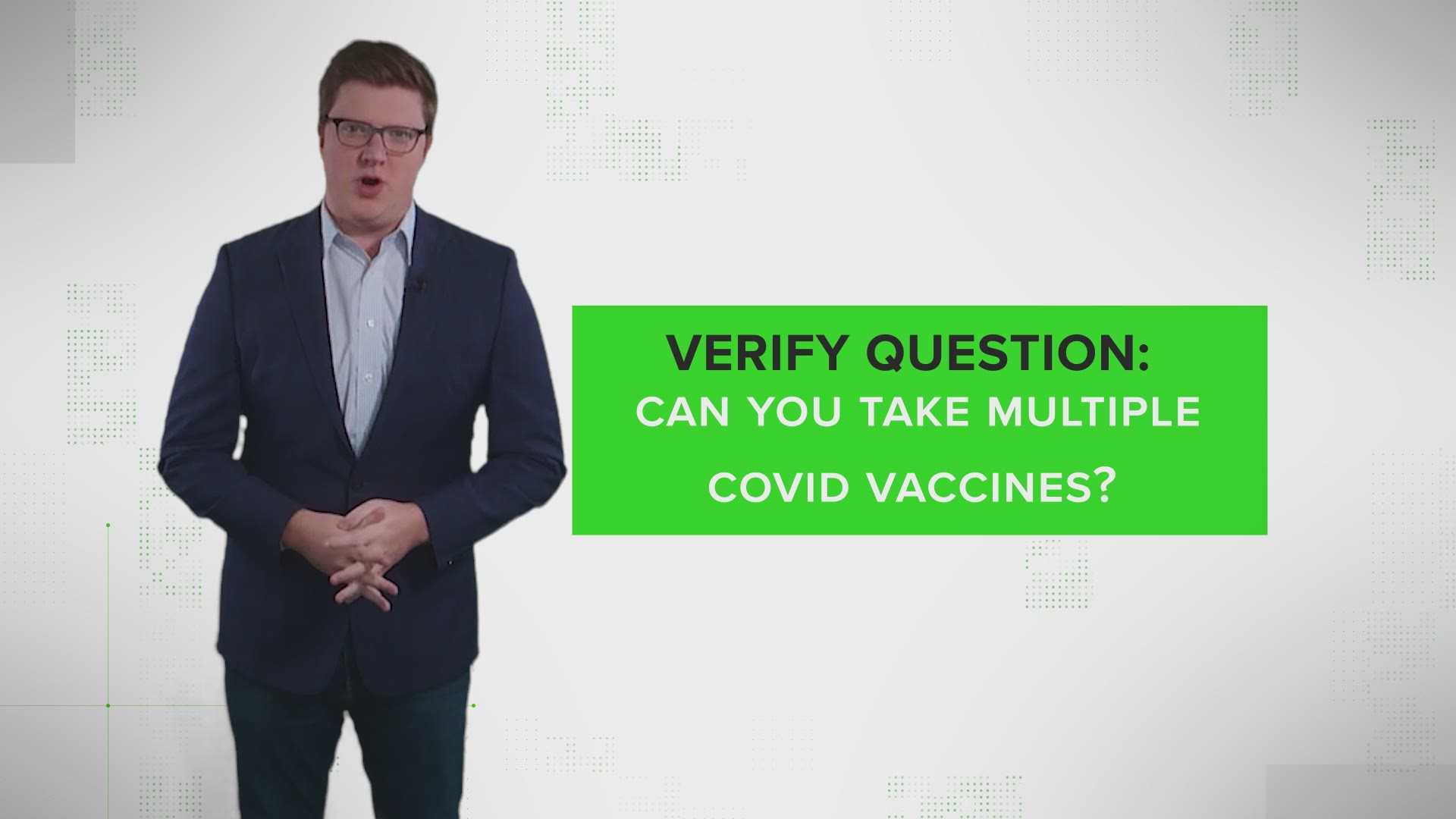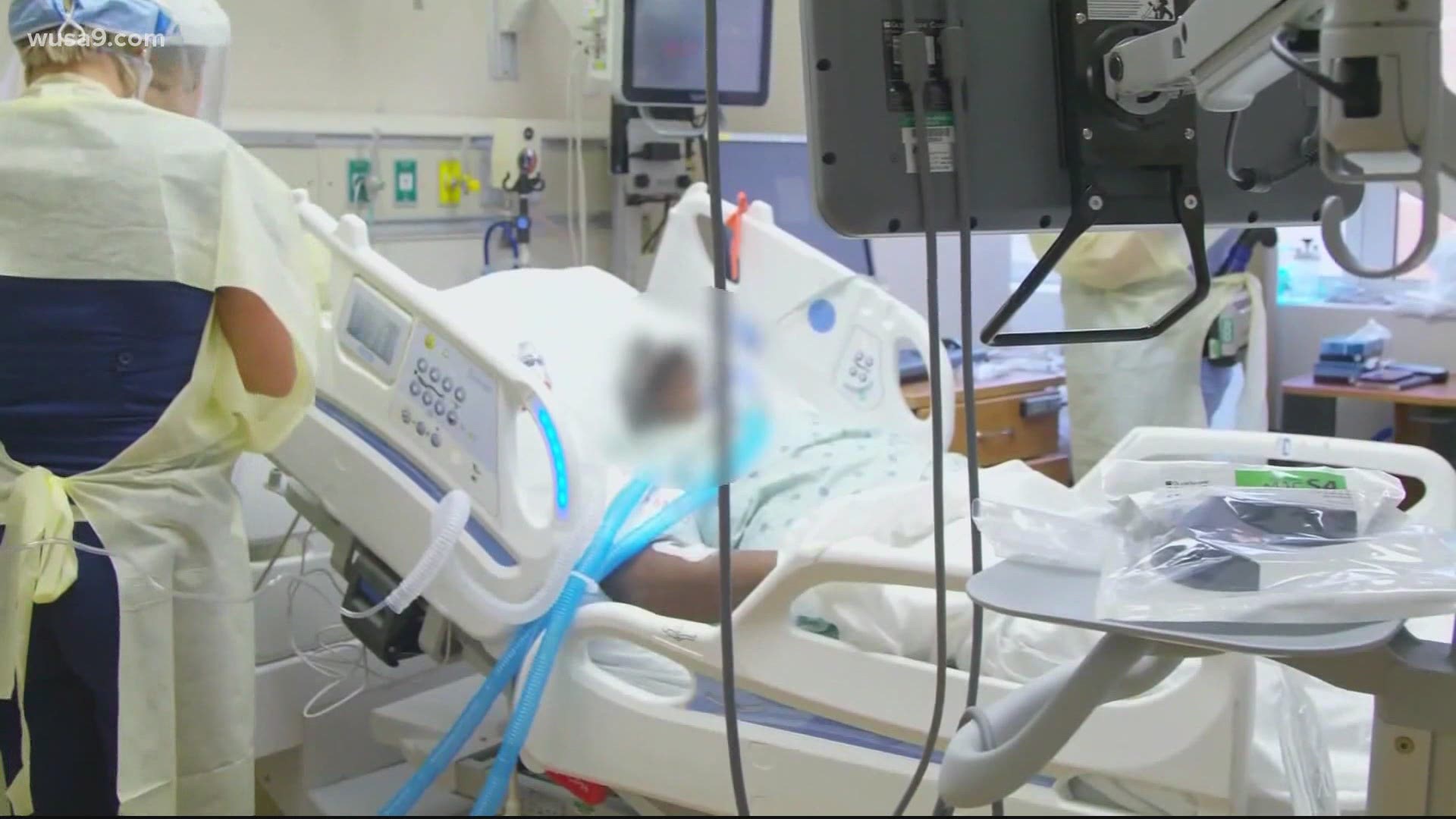WASHINGTON — Coronavirus cases, hospitalizations and deaths have been hitting records for weeks, as winter holidays continue and we enter the flu season. As headlines about hospitals reaching high levels of capacity cross your timeline, the Verify team is here to put those numbers into context.
QUESTION:
What does hospital capacity actually mean and how is it measured? And should you go to the hospital for something other than coronavirus?
ANSWER:
Our experts measure capacity by the number of open beds that have adequate staffing and resources, not simply empty beds. They stress that if you need urgent care, you should not hesitate to seek medical attention.
SOURCES:
- Bob Atlas, President and CEO of the Maryland Hospital Association
- Julian Walker, VP of Communications for the Virginia Hospital and Healthcare Association
- Jim Scheulen, the Chief Administrative Officer for emergency medicine and capacity management at Johns Hopkins Hospital
PROCESS:
A hospital at capacity doesn't look how you think it would, because being "at capacity" does not necessarily mean every bed is full.
Even if a bed is empty, Bob Atlas explains, you need qualified medical professionals to staff that bed.
"They can get beds, but the beds have to be hooked up to the right equipment. And then you have to have the staff to be able to serve the beds," he said.
Atlas says there are more boxes to check when it comes to COVID-19 patients, like distancing and proper equipment.
"You have to have the right ventilation and separation and so forth," he continued. "So when we're talking about hospital capacity, it starts at physical beds in total. Then how many of those beds you can staff."
Jim Scheulen is in charge of capacity management at Johns Hopkins. He says the hospital has an extremely complex modeling system that helps them predict what their influx of patients could look like as they need to balance the number of coronavirus beds with other patients.
"We can say, 'okay, we need this number of beds to take care of this, that means we have this number of beds that are flexible right now.' But as the pandemic increases, we might have to shift more beds into pandemic care, and less beds into routine care," he said.
Scheulen explains that staffing is the next step.
"So how are you going to get staff? Are you going to bring them in from another place? Are you going to bring in emergency care? Are you going to redeploy people by shutting something down? It really comes down to planning."
Our experts also pointed out that measuring capacity varies from state to state and from hospital to hospital, since they all have different resources, patient populations, and existing data to work with. Many rural hospitals do not have the same capacity management strategies as a major hospital like Johns Hopkins.
But, while describing the hard work of planning for surges and balancing resources, all of our experts stressed that we should have no hesitations about seeking out urgent medical care at our hospitals.
"If you need medical care, especially if you need emergency medical care for a cardiac arrest, or for a stroke, or for some very urgent condition,' Julian Walker says, "you should not have fear about going to a hospital, you should have great concern about your well being."
"Hospitals are very well aware of the fact that people are going to be sick, and we are prepared to take care of them pandemic or not," he continued.
Scheulen is confident that the people in charge know how to handle this crisis. "It is difficult to explain how many very smart people are thinking about how to accommodate everybody we can accommodate."
At the same time, Walker stresses that we still need to be laser-focused on slowing the spread and lifting the burden from our healthcare workers as we work toward mass vaccinations in 2021. He says even though none of the hospitals he oversees in Virginia have gotten to a breaking point, it's not out of the realm of possibility.
"Just because Virginia or Maryland is saying there are still beds available, that doesn't mean that we couldn't get to a real critical point," Walker says. "It is essential for people to follow the safety guidelines, for people to practice social distancing, to limit the size of gatherings that they attend or are involved in, to wear a mask consistently, and to wash your hands."
"Honestly, it sounds dire on television. And it's not anything that any of us have had to face before. But I feel confident, actually, that we're doing pretty well against this thing," Scheulen told us with a hopeful smile. "Is the system stressed? Yes. But it's holding up, and we are there for people."


